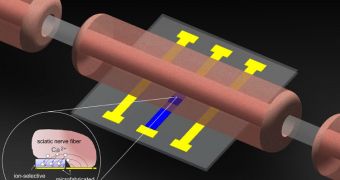A group of scientists from the Massachusetts Institute of Technology (MIT) and the Harvard Medical School (HMS) announce the development of a new technology for improving the performance of neural implants used to address a number of neurological disorders.
Some of the conditions in this category include epilepsy and chronic pain, which are oftentimes caused by excessive electrical activity in the human brain. But electrical implants can be used to shut down this extra activity in very specific patterns.
By doing so, scientists would essentially leave nothing behind to set the foundation for epileptic seizures, for example. At the same time, these medical instruments could be used to restore lost nerve function in people with nerve damage.
However, there are numerous technical obstacles to implementing this new technology – called functional electrical stimulation (FES) – at a wide scale. One of the most common side-effects caused by this treatment technique was excessive pain.
This occurred because the electrical current the implants were using to suppress neural activity were leaking electricity into neural pathways that were functioning properly, throwing them off-balance.
Investigators say that the way a nerve transmits data can be modified by manipulating the number of charged ion molecules around a particular nerve. Through the same approach, the MIT/HMS team recently managed to lower the amount of current needed to cause beneficial effects by a wide margin.
At the same time, their new technology is also capable of stopping electrical signals flowing through a nerve at any time. “Functional electrical stimulation, as an idea, has been around for a long time, but its implementation in our body as a prosthetic is still in its infancy,” Jongyoon Han explains.
“There are a lot of technological reasons for that, and I think our work is helping to relieve some of those technological bottlenecks,” adds the expert, who is an associate professor of electrical engineering and computer science and biological engineering at MIT.
The scientist is also a member of the Research Laboratory of Electronics (RLE) at the Institute. Details of the work he and his collaborators conduced were published in the October 23 online issue of the top scientific journal Nature Materials.

 14 DAY TRIAL //
14 DAY TRIAL //